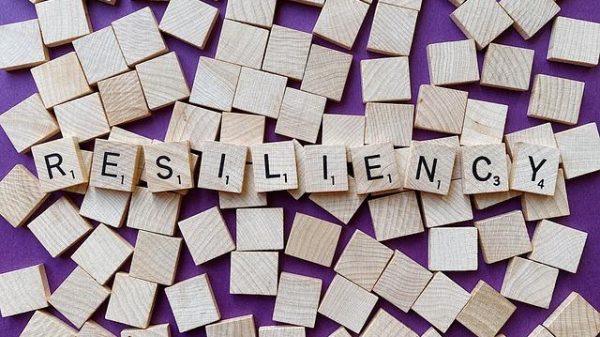In the intricate dance of human connection, emotional intimacy often emerges as the unsung hero, weaving bonds that transcend the superficial. Yet, in an age dominated by digital chatter and fleeting interactions, nurturing this profound sense of closeness can seem elusive. Enter the transformative power of active listening and empathy—two timeless tools that, when wielded with intention, can deepen relationships and foster genuine understanding. This article embarks on a journey to explore how these practices can serve as the cornerstone for building emotional intimacy, offering insights and techniques to enrich your personal and professional interactions. Whether you are looking to strengthen a romantic partnership, forge deeper friendships, or enhance your communication skills, this guide will illuminate the path to more meaningful connections.
Creating a Safe Space for Open Communication
Building emotional intimacy begins with understanding the importance of active listening and empathy. It’s about creating an environment where everyone feels heard and valued. Start by setting aside distractions, such as mobile devices, and giving your full attention to the speaker. This not only shows respect but also fosters a deeper connection. Use verbal and non-verbal cues, like nodding or maintaining eye contact, to demonstrate your engagement.
- Be present: Focus entirely on the conversation at hand.
- Reflect and clarify: Paraphrase what the speaker says to ensure understanding.
- Validate feelings: Acknowledge emotions without judgment, showing genuine care.
- Ask open-ended questions: Encourage further exploration of thoughts and feelings.
Empathy plays a crucial role in building trust and connection. It involves putting yourself in the other person’s shoes and responding with kindness and understanding. By practicing empathy, you not only affirm the other person’s experiences but also invite them to share more openly, thus strengthening the emotional bond. Remember, the goal is not to solve problems but to create a supportive space where emotions can be freely expressed.

Mastering the Art of Listening Without Interruptions
Building emotional intimacy is an art that flourishes in the fertile soil of active listening. It requires more than just hearing words; it demands the silent patience of a gardener nurturing delicate blooms. To listen without interruptions is to offer your full presence, creating a sanctuary where emotions can be expressed without fear of judgment. This act of quiet attentiveness can transform conversations into profound connections.
Here are some ways to enhance your listening skills:
- Embrace Silence: Let the speaker’s words linger in the air, allowing them to fully articulate their thoughts without rushing to fill the void.
- Maintain Eye Contact: A steady gaze signals your engagement, assuring the speaker of your genuine interest.
- Acknowledge Non-Verbally: A nod or a gentle smile can encourage continued sharing, subtly affirming their feelings.
- Ask Open-Ended Questions: Inviting further exploration shows that you value their perspective and are eager to understand more deeply.
By cultivating these habits, you not only foster emotional intimacy but also weave a tapestry of empathy that strengthens bonds and nurtures trust.
Cultivating Empathy Through Genuine Understanding
Empathy begins with the commitment to genuinely understand another’s perspective. This involves active listening, a practice that requires both presence and patience. Rather than simply waiting for your turn to speak, active listening invites you to fully engage with the speaker’s words, emotions, and underlying messages. This means setting aside distractions, maintaining eye contact, and offering verbal and non-verbal cues that signal your attentiveness.
- Reflect on what is being said, allowing the speaker’s thoughts to resonate within you.
- Clarify by asking open-ended questions that encourage deeper exploration of their feelings.
- Validate their experiences by acknowledging their emotions without judgment or immediate solutions.
By fostering a space where individuals feel truly heard and understood, we pave the way for emotional intimacy. This practice of empathy transforms relationships, creating bonds that are both profound and enduring. When we listen with the intent to understand, rather than respond, we cultivate connections rooted in compassion and trust.

Transforming Conversations into Deep Connections
Building emotional intimacy starts with the art of listening. Active listening goes beyond merely hearing words; it involves fully engaging with the speaker, understanding their emotions, and responding thoughtfully. To cultivate this skill, focus on the speaker without distractions, make eye contact, and nod or provide verbal affirmations to show you’re present. Empathy plays a crucial role here, allowing you to feel and understand another person’s emotions, fostering a deeper connection.
- Eliminate distractions: Put away your phone and turn off notifications to be fully present.
- Reflect back: Paraphrase what the speaker has said to ensure understanding and show you are truly listening.
- Ask open-ended questions: Encourage the speaker to share more about their feelings and thoughts.
- Practice patience: Give the speaker time to express themselves without interruption.
Empathy and active listening are powerful tools in transforming ordinary conversations into profound experiences. By investing your time and attention, you not only build trust but also create a space where both parties feel valued and understood.








